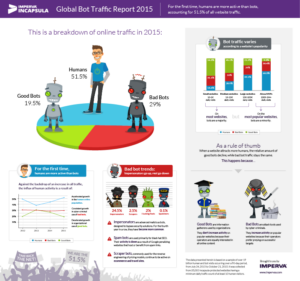Click Fraud and the Outdoor Advantage
If you were running an ad campaign and discovered that a significant portion of your budget was spent on impressions from robots instead of humans, how would you feel? This was exactly what automaker Chrysler was faced with when they learned that a video spot they had run on food site Saveur.tv was “viewed” by an audience that was 2% human and 98% bot traffic (online traffic and activities artificially generated by automated bots and spiders). In a similar case, when a team at Heineken USA gathered to hear the performance of a 2013 online advertising campaign they were shocked to learn that only 20 percent of the campaign’s “ad impressions”—ads that appear on a computer or smartphone screen—were even seen by actual people.
The sad fact of the matter is that, in the largely unpoliced and seldom understood inner-workings of the internet, the game is changing, and not necessarily for the better. From the angle of the user, the early days of unhindered web-surfing have given way to the constant annoyance of pop-up ads and banners that hijack a user’s ability to seamlessly scroll down a web-page. On the side of the advertiser, however, it is the trend of increasingly fake web traffic that has them reevaluating the effectiveness of digital advertising. In fact, according to the annual Bot Traffic Report from Incapsula, only 51% of web traffic today is driven by humans, with the other 49% coming from machines (29% of which are considered malicious bots.)
In late 2015, the Outdoor Advertising Association of America took it upon themselves to shine a light on the growing disenchantment of the once highly-revered world of digital advertising with their “Feel the Real” campaign. “The campaign highlights conventional reasoning that nearly half of the $14 billion spent on digital has been lost due to fraud and misrepresentation,” OAAA Chief Marketing Officer Stephen Freitas said in the announcement of the campaign. “Digital is suffering a reality problem, and we want to show how OOH – a real, tangible, and quantifiable medium – can drive consumers to digitally engage with brands. Our goal with ‘Feel the Real’ is twofold: to build awareness of OOH’s ability to track and increase digital effectiveness, and encourage media planners to incorporate more OOH advertising into their plans,” he said.
At the end of the day, advertisers want one thing: for people to see their marketing message and respond with a call to action. While there are benefits and drawbacks to all forms of advertising media, one fact remains certain: the people who view ads on the sides of buses, buildings, and billboards are real, and not just a machine that counts as an impression toward your campaign.
